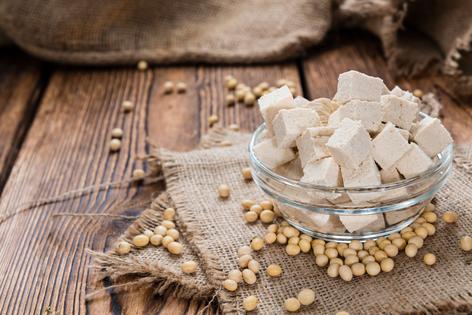Environmental Nutrition: Get to know tofu today
While a relatively new food on this side of the Pacific, tofu has been a dietary staple in Asia for centuries. Made from boiled, curdled, and pressed soybean milk, "the cheese of Asia" first originated in China and then spread to places like Korea and Japan courtesy of Buddhist monks. While the wobbly blocks were once loathed by most Americans as health food gone wrong, the dislike for tofu has generally eroded as people warm up to the fact that it's an inexpensive and versatile source of plant protein with other nutritional virtues.
Healthy tofu
For starters, studies have linked consumption of soy foods like tofu with health benefits, including lowering blood pressure, improving cholesterol numbers, and potentially lessening the risk of certain cancers like breast, ovarian, endometrial, gastric and prostate. "Plant compounds called isoflavones, as well as something specific about soy protein itself, are behind many of soy's health-boosting powers," says Virginia Messina, M.P.H., R.D., a plant-based nutrition expert.
Because the coagulants used during production are high in either magnesium (in nigari tofu) or calcium, Messina says that tofu supplies good amounts of these minerals. "Studies show that calcium absorption from tofu is comparable to that from cow's milk," she adds. A block of tofu also offers up a range of other essential minerals, including iron, phosphorus, manganese and selenium, not to mention alpha-linolenic acid, the essential omega-3 fatty acid. And since tofu is considered a complete protein, Messina says it has all the essential amino acids that we require for tasks such as building muscles.
There is a growing body of evidence that eating more plant protein including tofu at the expense of animal protein does a body good. Case in point: A 2017 British Journal of Nutrition study found that higher consumption of plant protein can be protective against diabetes, whereas a liberal intake of meat raises the risk.
Building blocks
Another perk of the bean curd is that it can find a home in many different recipes, from curries to smoothies, because of two distinctive features: First, it's relatively bland on its own and doesn't compete with other flavors in recipes; second, it's also porous, which allows it to absorb surrounding flavors. While most genetically modified soy is used for livestock feed or in highly processed foods, if you want to be sure that you're using non-GMO tofu look for brands that are certified organic.
Tofu is available in a variety of textures, each with a different purpose in the kitchen. Before use, a block of medium to extra-firm tofu should be pressed between dishtowels or paper towels to remove excess moisture and make it firmer, which enhances its ability to absorb flavors like marinades
.
Pesto Stuffed Tofu
Serves 2
1 package (15 oz) extra-firm tofu
Pinch salt
1/2 teaspoon chili powder
1/4 teaspoon black pepper
1 tablespoon vegetable oil
3 tablespoons prepared pesto
1. Line a cutting board with paper towels. Top with tofu and paper towel. Press gently to extract excess liquid. Slice tofu along its width into 2 slabs, then cut each slab in half. Season with salt, chili powder and black pepper.
2. Heat oil in a skillet over medium-high heat. Add tofu to pan and cook until golden and crispy, about 3 minutes. Turn and cook the other side for 3 minutes.
3. Spread pesto on two pieces of tofu and top with remaining tofu.
Nutrition Information Per Serving: 446 calories, 34 grams (g) fat, 5 g saturated fat, 7 g carbohydrate, 28 g protein, 2 g dietary fiber, 196
(Environmental Nutrition is the award-winning independent newsletter written by nutrition experts dedicated to providing readers up-to-date, accurate information about health and nutrition in clear, concise English. For more information, visit www.environmentalnutrition.com.)







